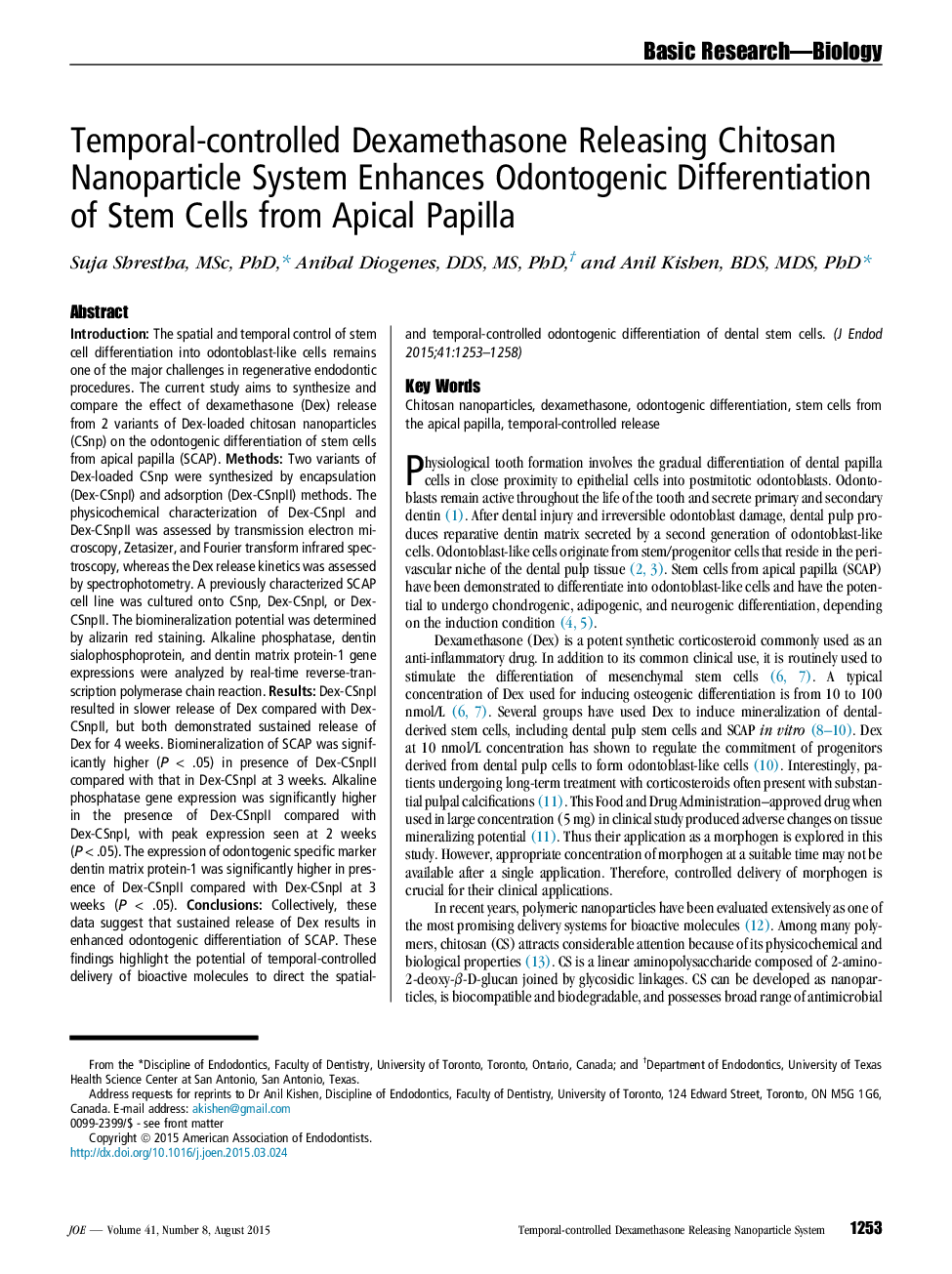| Article ID | Journal | Published Year | Pages | File Type |
|---|---|---|---|---|
| 3147337 | Journal of Endodontics | 2015 | 6 Pages |
•This study highlights development and characterization of 2 novel temporal-controlled dexamethasone releasing nanoparticle systems.•Chitosan-based nanoparticles are non-cytotoxic to SCAP, and temporal-controlled release of Dex enhanced the odontogenic differentiation potential.•The proposed morphogen delivering method can be used for the spatial and temporal control in regenerative endodontic procedures.
IntroductionThe spatial and temporal control of stem cell differentiation into odontoblast-like cells remains one of the major challenges in regenerative endodontic procedures. The current study aims to synthesize and compare the effect of dexamethasone (Dex) release from 2 variants of Dex-loaded chitosan nanoparticles (CSnp) on the odontogenic differentiation of stem cells from apical papilla (SCAP).MethodsTwo variants of Dex-loaded CSnp were synthesized by encapsulation (Dex-CSnpI) and adsorption (Dex-CSnpII) methods. The physicochemical characterization of Dex-CSnpI and Dex-CSnpII was assessed by transmission electron microscopy, Zetasizer, and Fourier transform infrared spectroscopy, whereas the Dex release kinetics was assessed by spectrophotometry. A previously characterized SCAP cell line was cultured onto CSnp, Dex-CSnpI, or Dex-CSnpII. The biomineralization potential was determined by alizarin red staining. Alkaline phosphatase, dentin sialophosphoprotein, and dentin matrix protein-1 gene expressions were analyzed by real-time reverse-transcription polymerase chain reaction.ResultsDex-CSnpI resulted in slower release of Dex compared with Dex-CSnpII, but both demonstrated sustained release of Dex for 4 weeks. Biomineralization of SCAP was significantly higher (P < .05) in presence of Dex-CSnpII compared with that in Dex-CSnpI at 3 weeks. Alkaline phosphatase gene expression was significantly higher in the presence of Dex-CSnpII compared with Dex-CSnpI, with peak expression seen at 2 weeks (P < .05). The expression of odontogenic specific marker dentin matrix protein-1 was significantly higher in presence of Dex-CSnpII compared with Dex-CSnpI at 3 weeks (P < .05).ConclusionsCollectively, these data suggest that sustained release of Dex results in enhanced odontogenic differentiation of SCAP. These findings highlight the potential of temporal-controlled delivery of bioactive molecules to direct the spatial- and temporal-controlled odontogenic differentiation of dental stem cells.
